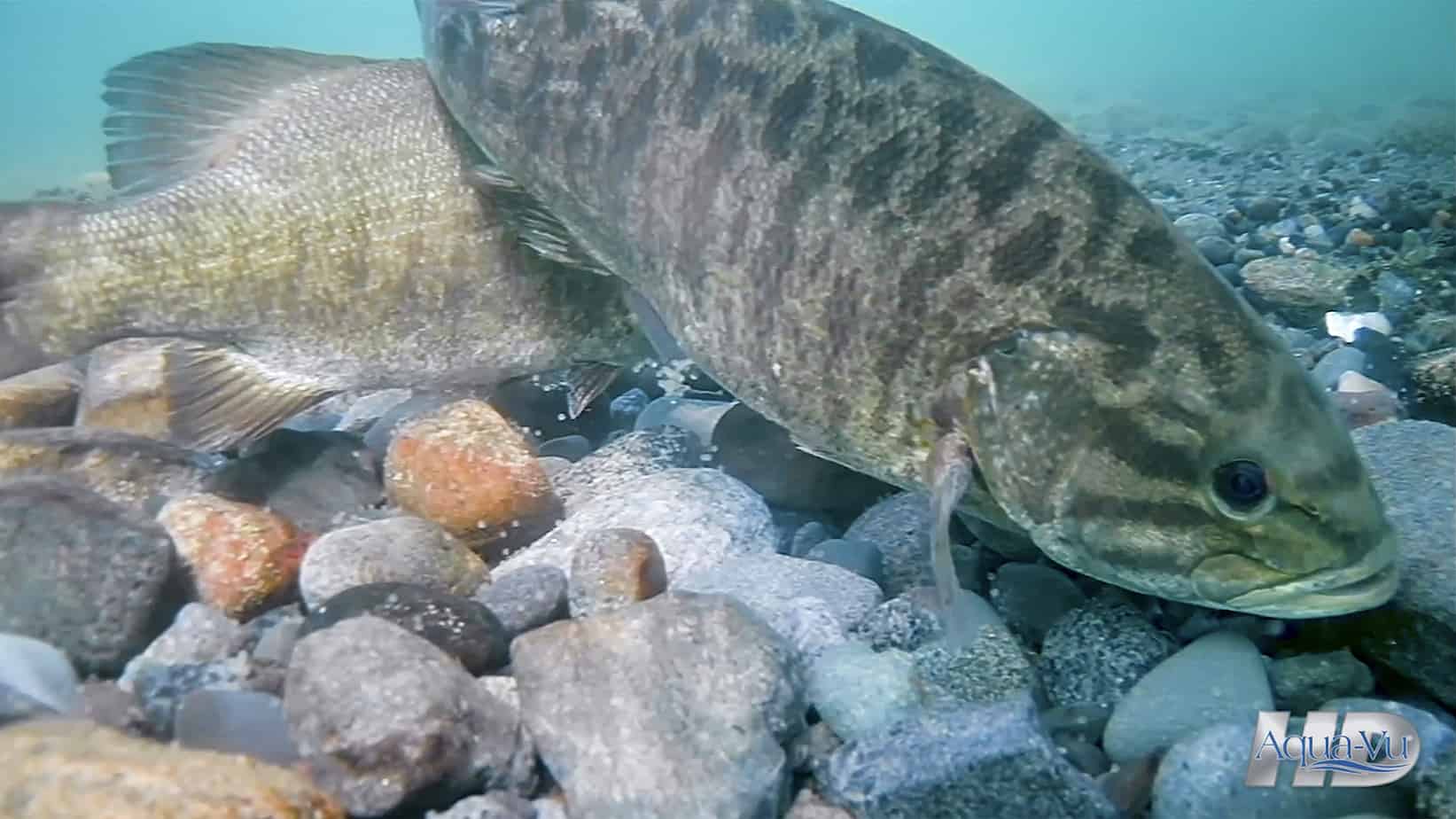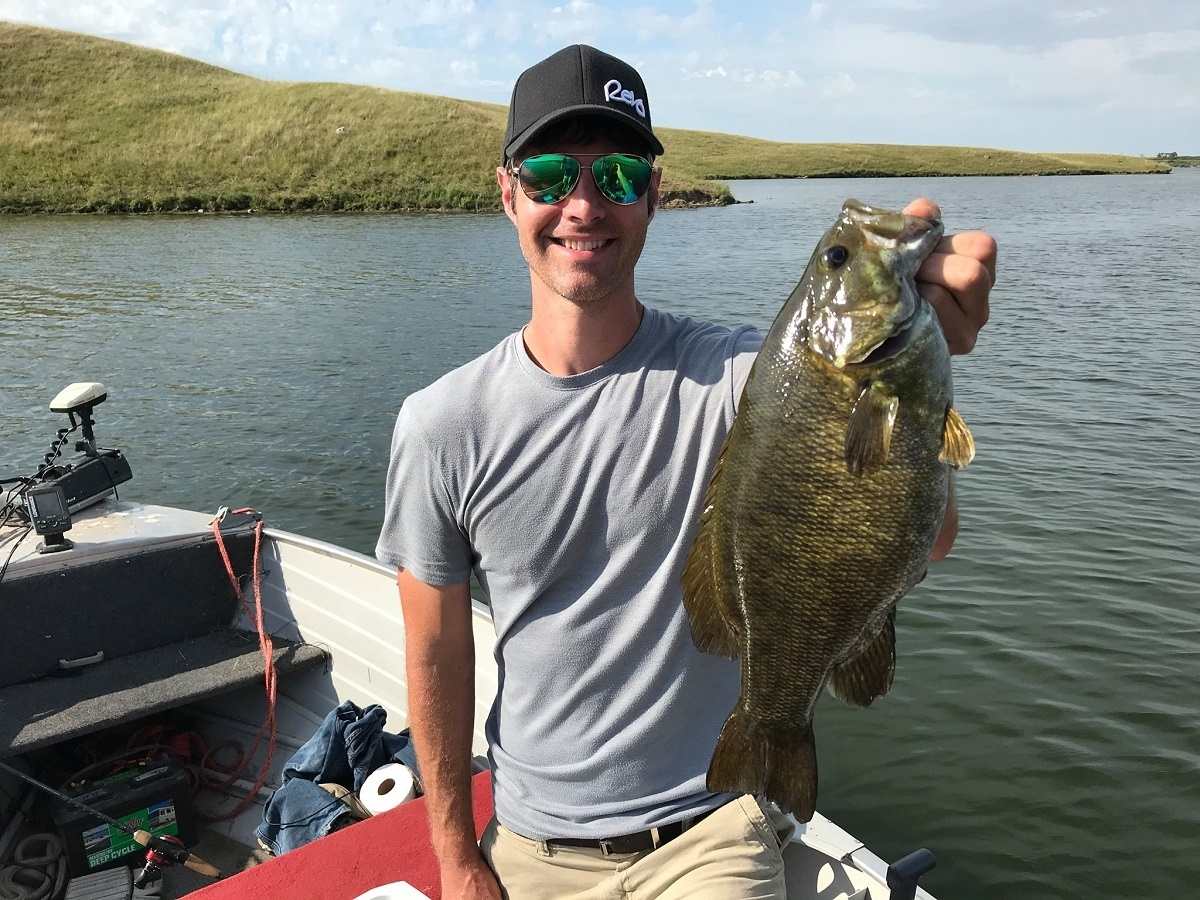Smallmouth bass, known for their feisty nature and highly sought after by fishing enthusiasts, have a unique spawning behavior that is worth exploring. Understanding their spawning habits is crucial for anglers looking to target these prized fish during the right seasons. In this article, we will dive into the fascinating world of smallmouth bass spawning, uncovering the factors that influence their reproductive cycle and discovering the ideal time to reel in these elusive creatures. So, grab your fishing gear and get ready to learn when and where smallmouth bass spawn!
The Basics of Smallmouth Bass Spawning
Smallmouth bass (Micropterus dolomieu) are a popular sportfish known for their thrilling fights and acrobatic leaps out of the water. To fully understand and appreciate this incredible species, it is important to delve into the fascinating intricacies of their reproductive cycle. Knowing when and where smallmouth bass spawn can not only enhance our understanding of their behavior but also help us develop effective conservation and management strategies.
Understanding the Reproduction Cycle
The smallmouth bass spawning season plays a critical role in the population dynamics and sustainability of this species. While each individual bass may have unique behavior and spawning preferences, there are general patterns and cues that influence their reproduction cycle. Like many other fish species, smallmouth bass are external spawners, meaning that the female releases her eggs into the water while the male fertilizes them.
Factors Influencing Spawning Time
Several factors influence the timing of smallmouth bass spawning, and understanding these factors can help anglers and researchers predict when the peak spawning season is likely to occur. One of the most crucial factors is water temperature, as smallmouth bass prefer a specific range for successful reproduction. Other factors, such as photoperiod (the length of daylight hours), water depth, and water quality, also play significant roles in spawning behavior.
Importance of Spawning to Smallmouth Bass Population
Spawning is a vital event for the smallmouth bass population, as it ensures the continuation and survival of the species. Successful reproduction leads to the creation of new generations of smallmouth bass, strengthening the population and maintaining its genetic diversity. Understanding the importance of spawning to smallmouth bass can provide valuable insights into the overall health and viability of their habitats.
Environmental Considerations
To fully comprehend the spawning behavior of smallmouth bass, we must explore the specific environmental conditions that influence their reproductive choices. Several key environmental factors come into play, including water temperature, photoperiod, and water depth and quality.
Water Temperature
Water temperature is a crucial environmental consideration for smallmouth bass spawning. These fish typically prefer water temperatures between 60 to 65 degrees Fahrenheit (15 to 18 degrees Celsius) for successful reproduction. The warming temperatures of spring often trigger their instinct to spawn, while cooler fall temperatures prompt a different spawning behavior.
Photoperiod
Photoperiod, or the length of daylight hours, acts as another significant cue for smallmouth bass spawning. As daylight hours increase in the spring, it signals to the bass that it is time to commence their reproductive activities. Conversely, decreasing daylight hours in the fall signal a shift in their spawning behavior.
Water Depth and Quality
Smallmouth bass prefer specific water depths and qualities for successful spawning. They typically select shallow areas with gravel or rocky substrates, where the males create nests called “beds.” The water quality, including oxygen levels and clarity, also plays an essential role in the success of their reproductive efforts.

Spawning Seasons
Smallmouth bass exhibit different spawning seasons depending on their geographic location. The three primary spawning seasons for smallmouth bass are spring, summer, and fall. While there is some regional variation in these spawning seasons, understanding the general patterns aids in locating and conserving their spawning areas.
Spring Spawning
Spring is the most common spawning season for smallmouth bass across their range. As the waters warm up, typically in late April or early May, smallmouth bass become active and start their reproductive rituals.
Summer Spawning
In some regions, smallmouth bass also engage in a secondary spawning season during the summer months. This summer spawning behavior is less common but still occurs under specific environmental conditions and cues.
Fall Spawning
In cooler regions, smallmouth bass exhibit a fall spawning season as the temperatures begin to drop. Fall spawning typically occurs from September to October and provides an alternative reproductive opportunity for smallmouth bass in these areas.
Spring Spawning
Spring is a critical time for smallmouth bass spawning, as it represents the primary reproductive season for this species. Several behavioral and environmental cues contribute to the timing and success of spring spawning in smallmouth bass.
Cues for Spring Spawning
As the water temperature begins to rise above 60 degrees Fahrenheit, smallmouth bass become increasingly active and ready to spawn. Additionally, the increasing photoperiod of longer daylight hours triggers their reproductive instincts. These cues prompt both male and female smallmouth bass to seek out suitable spawning locations and initiate the breeding process.
Preferred Locations for Spring Spawning
Smallmouth bass exhibit a preference for shallow areas with rocky or gravel bottoms for their spring spawning activities. These areas provide suitable substrates for nest construction and egg protection. Additionally, smallmouth bass often select sites with a moderate water flow to ensure sufficient oxygenation of their developing eggs.
Courtship and Nest Building
Once suitable spawning locations are identified, the male smallmouth bass begins the courtship process. The male constructs a nest, or “bed,” by clearing debris and creating a circular depression in the substrate. He then guards the nest diligently, preparing for the arrival of a suitable female.
Egg Development and Protection
After courtship, the female smallmouth bass releases her eggs into the nest, and the male promptly fertilizes them. The male aggressively patrols the nest, defending it from potential threats and ensuring the safety of the developing eggs. During this critical period, both male and female smallmouth bass actively contribute to the survival and protection of their offspring.
Hatching and Fry Survival
The eggs typically hatch within a couple of weeks after fertilization, depending on environmental conditions such as water temperature. The newly hatched fry attach themselves to the nest and feed off yolk sac reserves before venturing out into the surrounding habitat. Survival rates of fry can vary, depending on factors such as predation, water quality, and availability of food.

Summer Spawning
In addition to the predominant spring spawning season, smallmouth bass in some areas exhibit a secondary spawning season during the summer months. Summer spawning behaviors differ slightly from those observed during spring, reflecting the unique challenges and opportunities presented by warmer environmental conditions.
Cues for Summer Spawning
Summer spawning in smallmouth bass is triggered by specific environmental cues, including a combination of rising water temperature and altered photoperiod. While the exact temperature thresholds and photoperiod changes may vary, warmer waters and longer daylight hours serve as signals for smallmouth bass to engage in summer reproductive activities.
Distinctive Nesting Behaviors
During the summer spawning season, smallmouth bass may exhibit slightly different nesting behaviors compared to spring. They may choose different locations or prefer habitats with cooler water temperatures to ensure optimal conditions for their nests and offspring. Additionally, male smallmouth bass may exhibit a more active role in nest defense during the warmer months.
Challenges and Survival Rates
Summer spawning presents unique challenges for smallmouth bass fry survival. The combination of warmer water temperatures and increased predation pressure can influence the survival rates of newly hatched fry. However, the secondary summer spawning season provides a valuable reproductive opportunity for smallmouth bass populations in areas where spring spawning conditions may be less favorable.
Fall Spawning
In cooler regions, smallmouth bass display a fall spawning season as temperatures begin to decline. Fall spawning represents an alternative reproductive strategy for smallmouth bass, enabling them to adapt to the changing environmental conditions.
Cues for Fall Spawning
The decreasing water temperatures in the fall serve as the primary cue for smallmouth bass to engage in fall spawning behaviors. As the waters cool down, typically between September and October, smallmouth bass prepare for their reproductive activities, distinctive from the spring and summer seasons.
Common Fall Spawning Locations
Fall spawning locations may differ from those chosen during the spring and summer seasons. Smallmouth bass often select deeper areas with rocky or gravelly bottoms, where the water temperatures remain more stable and favorable for successful spawning. These fall spawning locations provide an alternative habitat for smallmouth bass populations and support the reproductive needs of the species in colder regions.
Unique Spawning Strategies
Fall spawning in smallmouth bass exhibits some unique strategies compared to other seasons. The courtship and nest-building behaviors remain similar, but the timing and environmental considerations differ. The fall spawning season is essential for maintaining genetic diversity and the overall health of smallmouth bass populations that inhabit cooler regions.

Management and Conservation
Given the importance of spawning in sustaining healthy smallmouth bass populations, effective management and conservation strategies are crucial. Understanding the specific needs and vulnerabilities during the spawning season can help develop and implement policies and regulations to protect these valuable resources.
Regulations to Protect Spawning Bass
Many regulatory bodies have established fishing regulations that aim to protect spawning smallmouth bass populations. These regulations often include restrictions on fishing methods, gear types, and seasonal closures in spawning areas. By enforcing these regulations, authorities can safeguard the spawning habitats and ensure the continued growth of smallmouth bass populations.
Stakeholder Responsibilities
Protecting the spawning habitats of smallmouth bass requires collaboration among various stakeholders, including anglers, resource management agencies, and the general public. Anglers play a crucial role by adhering to fishing regulations, practicing responsible fishing techniques, and reporting any illegal or harmful activities observed in spawning areas.
Conservation Efforts and Research
Ongoing research and conservation efforts focused on smallmouth bass spawning habitats contribute to the overall well-being of these fish populations. Habitat restoration projects, water quality monitoring, and population assessments aid in identifying and addressing any threats or issues that may impact their spawning success. More knowledge gained through research can inform better management practices and ultimately protect the precious resource that is the smallmouth bass.
Spawning Related Fishing Tips
Knowledge of smallmouth bass spawning behavior is not only vital for the conservation and management of these incredible fish but also offers anglers valuable insights for successful fishing trips. Understanding the best times to target spawning bass, appropriate lures and techniques, and practicing ethical fishing practices can enhance the overall fishing experience while ensuring the future sustainability of smallmouth bass populations.
Best Times to Target Spawning Bass
To maximize your chances of catching spawning bass, it is crucial to understand the timing of their spawning seasons in your local area. Research local fisheries management agencies or consult experienced anglers to determine the peak spawning periods. Targeting these periods can increase your likelihood of encountering actively feeding bass and increase your chances of a successful fishing trip.
Lures and Techniques for Spawning Bass
When targeting spawning bass, it is recommended to use lures and techniques that mimic their natural prey or exploit their territorial behaviors. Soft plastic lures, such as tubes, grubs, or creature baits, can be effective in imitating various smallmouth bass prey items. Techniques such as casting and retrieving around rocky structures, drop-offs, or shallow flats can entice a territorial response from spawning bass.
Ethical Fishing Practices
While it is important to enjoy your fishing experience, it is equally crucial to practice ethical fishing practices that minimize potential harm to the spawning bass populations. Avoid fishing in known spawning areas during their critical reproductive periods. If you accidentally hook a spawning bass, handle it with care, and release it promptly to minimize stress and potential damage to the fish or its offspring.
By understanding the smallmouth bass spawning cycle, recognizing the environmental factors that influence their behavior, and adopting responsible fishing practices, we can both appreciate and protect these incredible fish. Smallmouth bass are not only a prized sportfish but also an essential component of healthy aquatic ecosystems. Let’s work together to ensure the long-term sustainability and enjoyment of smallmouth bass for generations to come.





